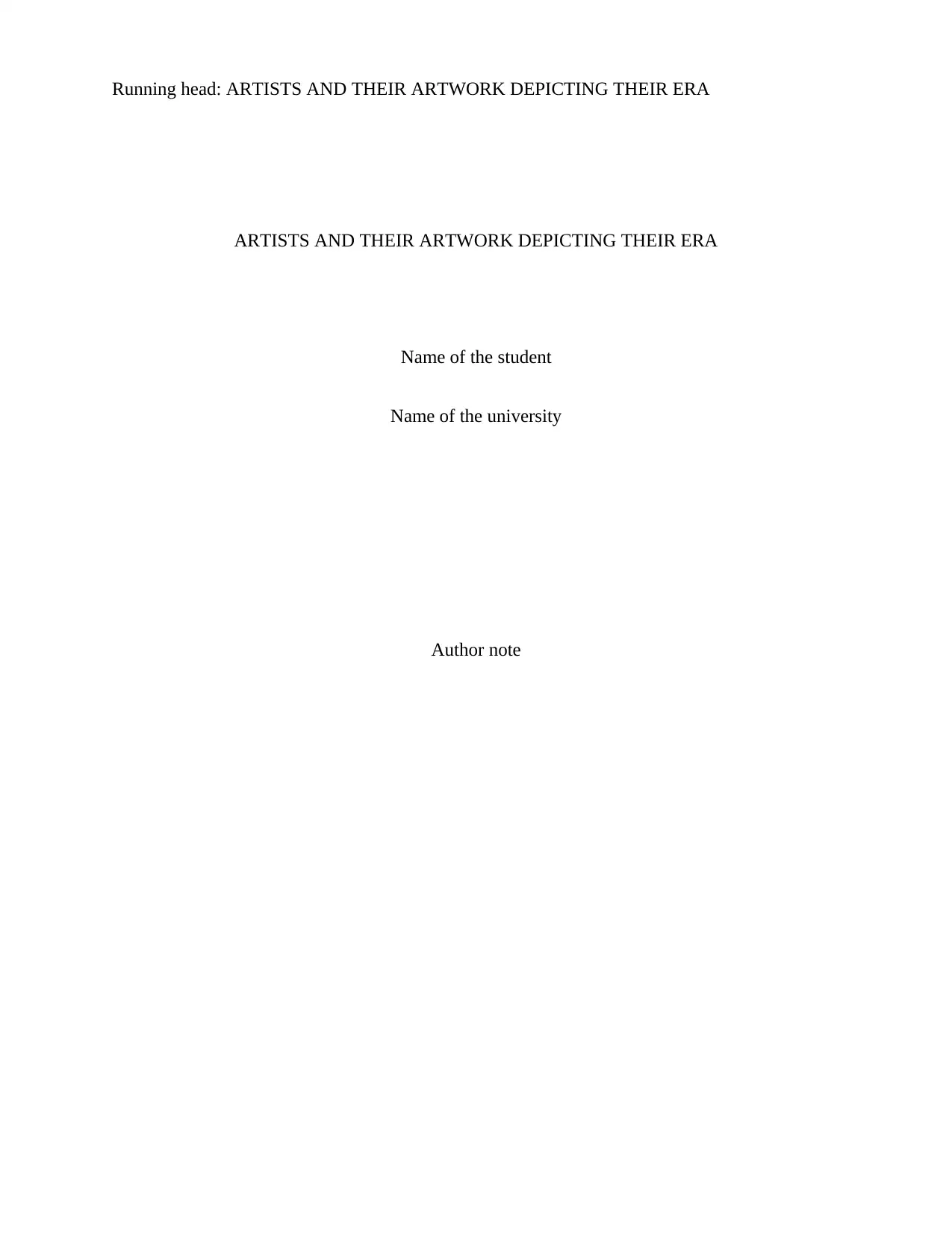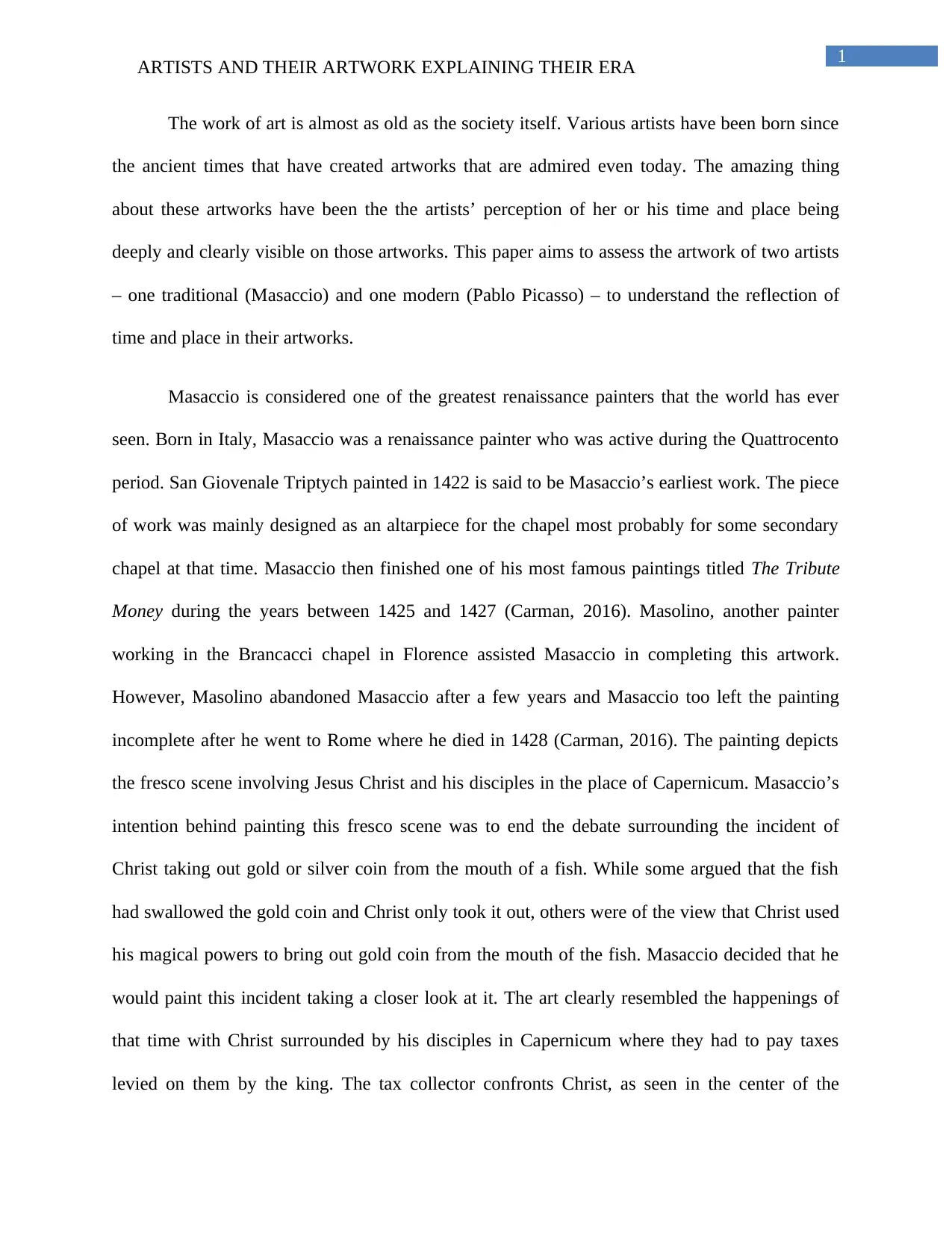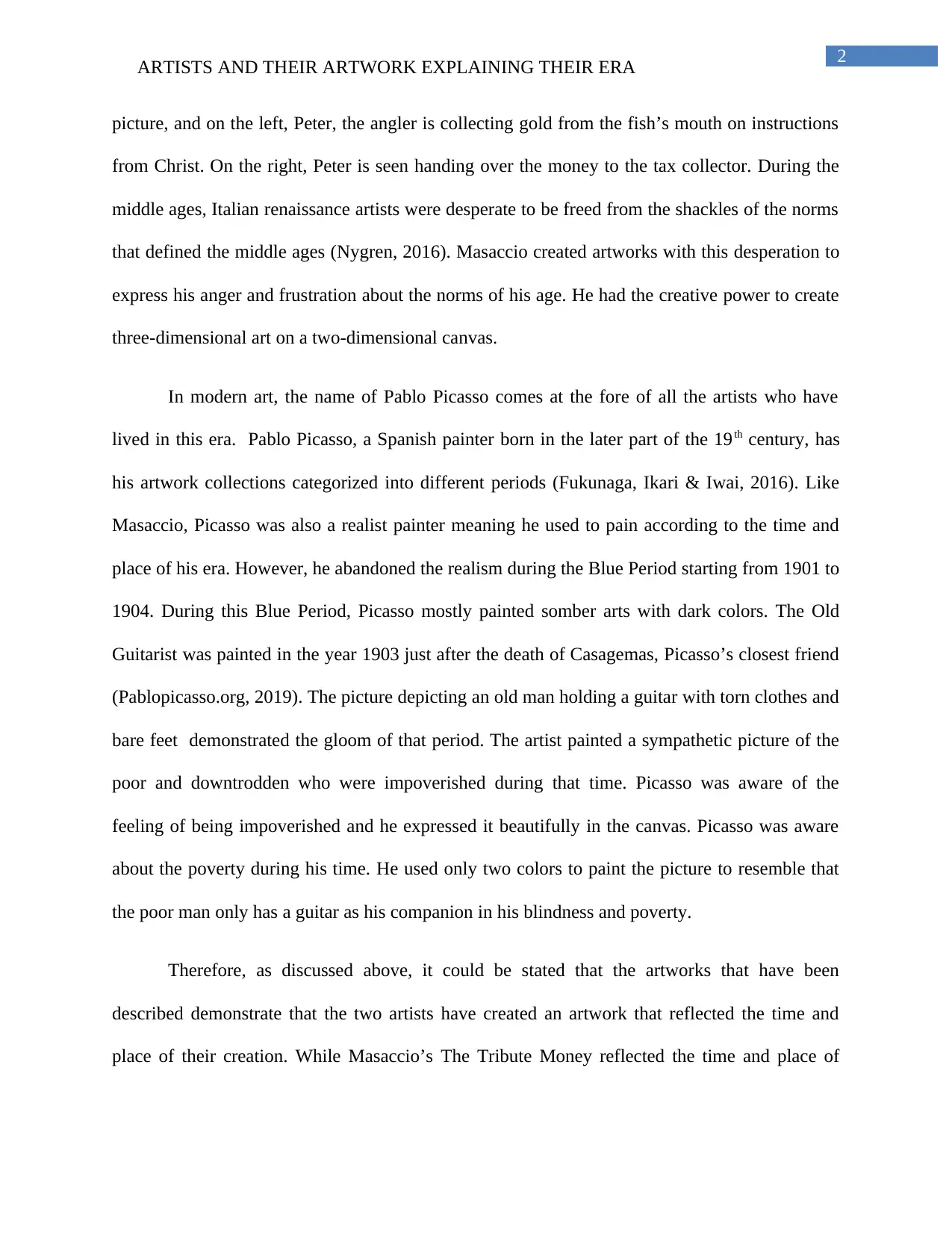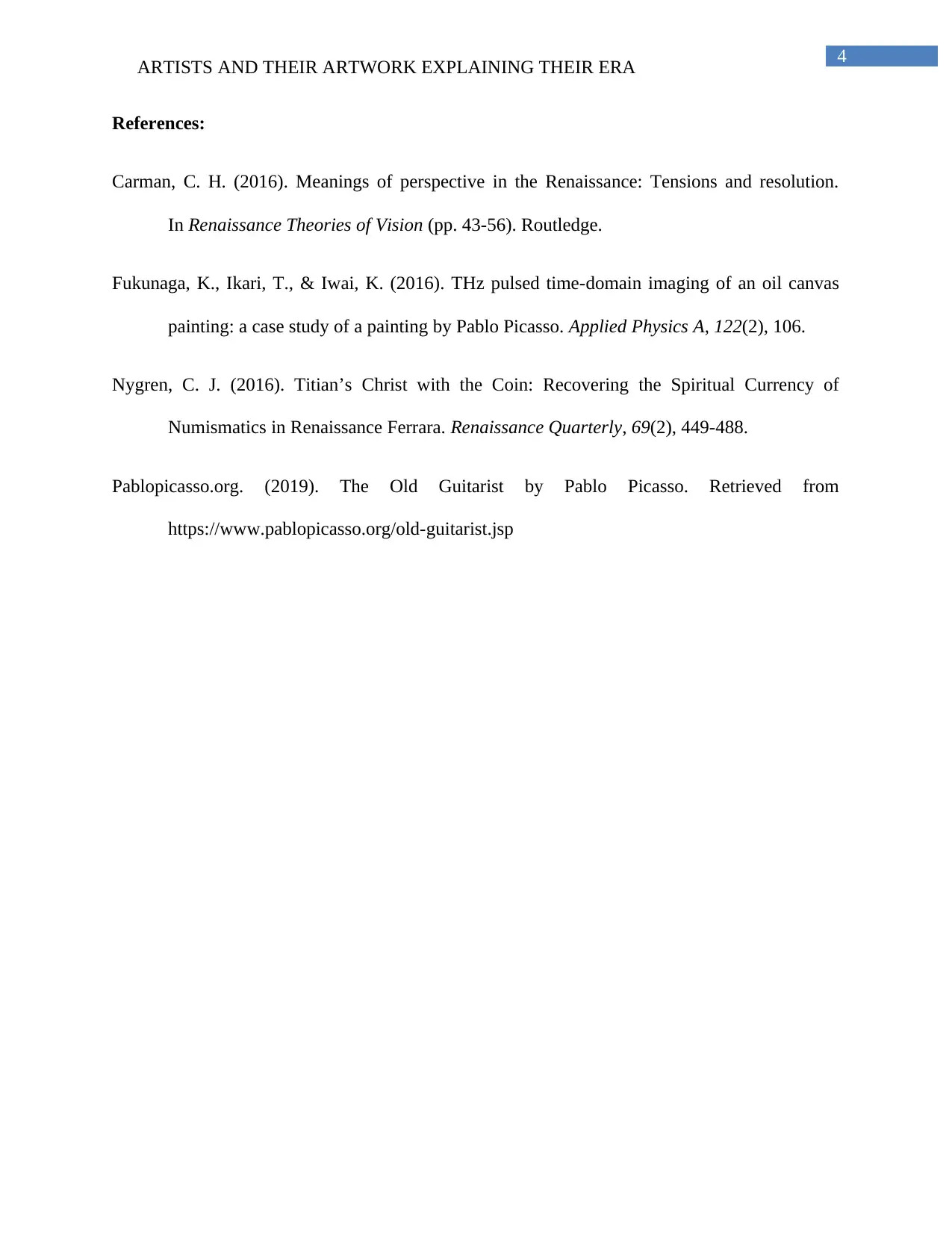The Human Condition in Art: Traditional and Modern Perspectives
VerifiedAdded on 2023/03/17
|5
|1004
|50
Essay
AI Summary
This essay examines how artists have created artworks that reflect the time and place in which they were created, focusing on the works of Masaccio and Pablo Picasso. The essay begins by introducing the concept of art as a reflection of society and then analyzes Masaccio's "The Tribute Money," highlighting its depiction of Renaissance values and events. It then shifts to Pablo Picasso's "The Old Guitarist," discussing how the artwork reflects the poverty and misery of the artist's era. The essay emphasizes the artists' intentions and the historical contexts of their creations, concluding that both artists successfully captured the essence of their respective times and places through their art. References to world events, beliefs, and worldviews influencing the artists at the time are included, with a detailed analysis of each artwork. The critical evaluation explains the significant achievements of each artist and their art movement, providing a comparative analysis of the impact of their work.
1 out of 5







![[object Object]](/_next/static/media/star-bottom.7253800d.svg)